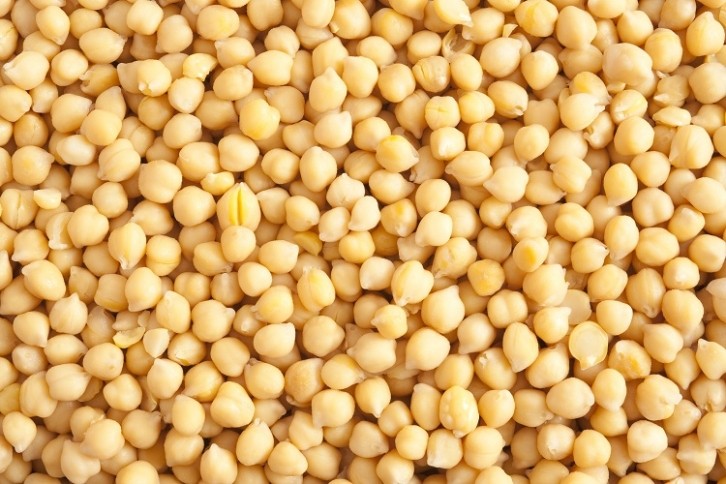Plant-based proteins are often used in meat and dairy analogues, and on occasion in egg analogues. Their purpose is to provide flexitarian, vegetarian and vegan consumers with an experience which compares closely with meat and dairy in taste, texture and nutritional value.
However, there is far more potential for plant-based proteins than simply replacing meat and dairy. At Food Ingredients Europe (FIE), which took place in Frankfurt, Germany, FoodNavigator found a range of uses for plant-based proteins that went beyond meat and dairy analogues.
Roquette: Adding texture to meals
In June this year, French ingredients company Roquette opened a new food innovation centre, located in its plant near the village of Lestrem, France. One of the main functions of the centre is to innovate using Roquette’s key ingredients, among them pea and wheat protein.
But Roquette wants to move beyond using these proteins simply in the context of meat and dairy analogues. It wants to widen the scope of what they can do. “We are less oriented on plant-based burger, plant-based sausage,” Christine Beauvois, Head of Food Customer Technical Service, Europe at Roquette, told FoodNavigator. Instead, Roquette wants “something more complex. . . rather than having just a solution of plant-based alternatives. I really believe that the consumer is more sensitive to the taste and texture.”
For example, pea protein can be used in bread. “We have a dedicated pea protein which is not competing with the gluten, so that means you can enrich the bread with pea protein without having any interaction with the gluten from the wheat,” Beauvois, told us.
Roquette protein can also be used to add texture to meals, without the use of meat analogues. “For example, at home I use pea protein texturised to replace the meat in the lasagne. It really plays the role of meat because of the texture, the juiciness, the mouthfeel.” This protein, Beauvois explained, is “to prepare your tomatoes, onions and spices,” in turn enhancing the texture of the meal.
“We also have powder mixes, when you just add some water and the protein will just swell and gives you the mouthfeel so it can be really wide range of proposal in savoury, in sweet. So we have really open doors for the pea protein as a tool.”
ChickP: A familiar taste
“We have now a pure protein. A pure protein is the best value offer to the food industry, because you can incorporate it in so many applications.” So said Liat Lachish Levy, CEO of Israeli startup ChickP.
The startup’s chickpea protein isolate can be utilised in a variety of products, ranging from dairy analogues, including cheese and barista’s milk, to other, fortified products, such as granola-based cereal and energy bars. Because of its lack of bitterness and recognisability in dishes like hummus, which have been eaten for hundreds of years, the protein provides an excellent basis for a functional ingredient, Levy told us.
“I think the innovation comes in our ability to take a very traditional, well-known ingredient and introduce it as a . . . solution to the industry.”
As well as the taste and the familiarity to consumers, chickpea is “an extremely nutritional crop with a complete amino acid profile. The health benefits offer a great solution and natural solution in the space of active nutrition.” Chickpea, unlike soy, is not an allergen and thus can be more flexible.

Primarily, though, the appeal of chickpea comes from an increased demand for high protein content in a range of foods, rather than just meat and dairy analogues, from flexitarians who need to replace the protein they’re losing from reducing meat consumption. Chickpea, with the benefits described in terms of taste, fits the bill well.
“The need for protein as being a functional ingredient comes from the consumer. Consumers are looking for an alternative, and it’s a matter of taste, it’s a matter of health, and it’s a matter of price. But it has to be first the taste.” With other proteins, “the taste, the bitterness of the isolate, the bitterness of the product appears when you try the product, and this you don’t have with chickpea.”
MycoTechnology: Mycelia fermentation
US-based ingredients company MycoTechynology also develops proteins intended for a wide range of uses. One such protein is its FermentIQ protein, which is made from protein fermented in shiitake mycelia.
MycoTechnology’s protein, through its fermentation, loses most of its flavour, making it easy to use in a multitude of products. “What you start with is always taste,” Pete Lubar, EVP Business Development & Co Founder at MycoTechnology, told FoodNavigator.
“If you naturalise the odour and taste of pea protein and rice protein, then you can do some really amazing things with it from a taste standpoint. It’s much easier to flavour, much easier to make a really good tasting product.”
Fermentation also has additional, nutritional value. It “makes it more bioavailable to the body – we have a really nice complete amino acid profile – so that’s super good because we can make nutritional claims. The body can absorb nearly 100% of the amino acids that are in FermentIQ.”
